Excerpts from Jim Conrad's
Naturalist Newsletter
from the May 15, 2016 Newsletter issued from Hacienda Chichen Resort beside Chichén Itzá Ruins; limestone bedrock; elevation ~39m (~128ft), N20.675°, W88.569°; central Yucatán state, MÉXICO
ERECT SPIDERLING
When each morning's first light breaks onto the space before the hut, a certain weed catches my attention during the few minutes when sunlight highlights it against a shadowy background. You can see it below:
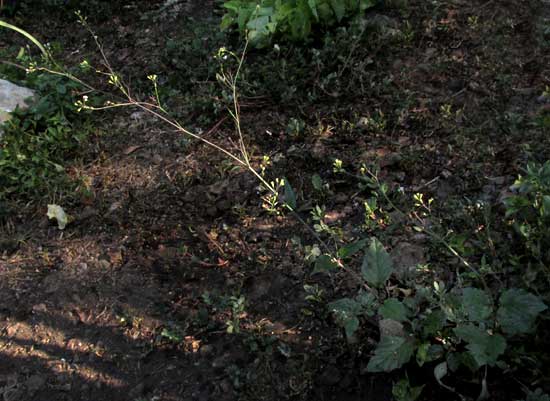
This annual weed has benefited from my daily waterings of the flowerbed beside it. I've not pulled it up because it wasn't hurting anything, and I wanted to see what it'd develop into. In the above picture you can see that it consists of several broad basal leaves issuing a diffuse head of tiny, white flowers. A close-up of the amaranth-like leaves is shown below:
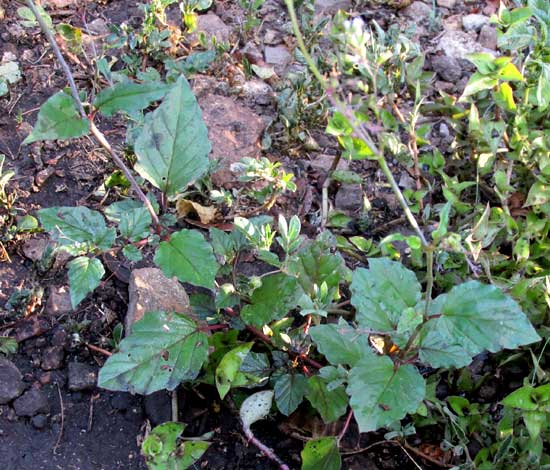
In plant identification, however, leaves can fool you. For identification usually you need flowers and/or fruits. A cluster of three slightly pink-tinged, 1.5mm long (1/16th inch), bell-shaped (campanulate), corolla-like structures is shown below:
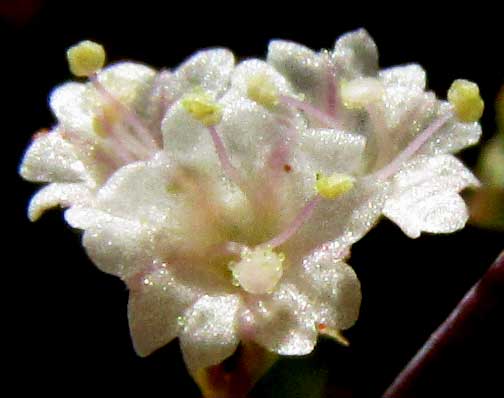
Each of these flowers seems to have two stamens with yellow anthers, and one plump, white stigma atop a style, and the lobes appear to be irregular in number, maybe ten, or maybe some would interpret five, with each lobe deeply indented at its tip making it look like two lobes. I referred to corolla-like "structures" instead of using the word corolla because of what's apparent if you look at the flowers from the side, as is done below:
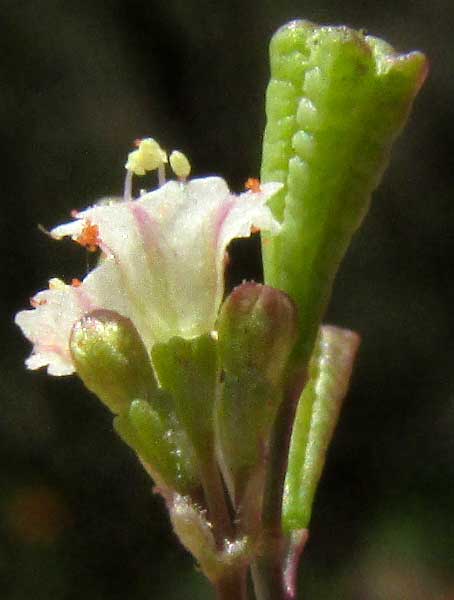
The corolla-like thing at the picture's left -- this one with three stamens instead of two -- sits atop the ovary, or future fruit, with no calyx beneath it. Therefore, the corolla-like thing is neither a proper corolla nor a calyx, but rather a single in-between structure known as a perianth. Since the perianth arises atop the ovary, the ovary is "inferior" in a world where most ovaries are "superior" -- the corolla and calyx arising below the ovary. The large, green item at the picture's right is an achene-type, one-seeded fruit. Below, more fruits are seen crowned with low "teeth":
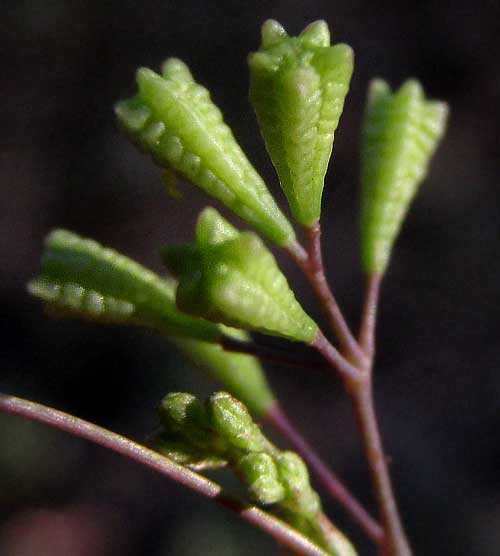
The inferior ovary and single, bell-shaped perianth instead of a calyx and corolla, and achene-type fruit all are good field marks pointing us toward the Four-O'Clock Family, the Nyctaginaceae. Once the family was recognized, it was easy to see which of the species of that family listed for the Yucatan looks like our plant.
Our plant is BOERHAVIA ERECTA, sometimes known as the Erect Spiderling. It has an English name because it occurs from the US Southeastern states west to New Mexico, then southward through all warmer parts of the Americas, plus it's been introduced into warm countries all over the world.
Erect Spiderling turns up in many kinds of disturbed, weedy habitats. In Mexico's traditional medicine it's been used in nervous disorders, from calming people down to treating spasms and epilepsy.